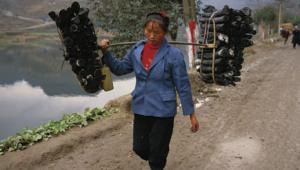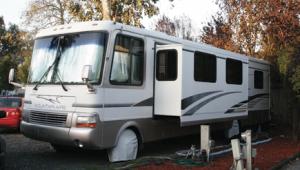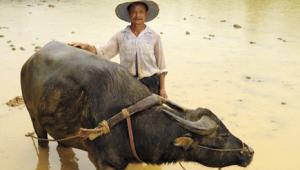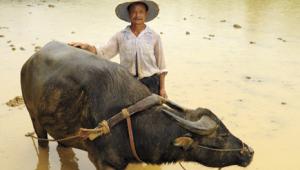On The Road; A Guide To Travel & Field Tripods Under 10 Lbs
When hiking or traveling with my SLR system, whether 35mm or digital, I prefer hand holding the camera to shoot nature and scenic views. Yet the value of a tripod is not lost on me, especially when confronted with the relatively long exposures required to capture a gracefully cascading waterfall or the warm glow of a sunset, or when employing a long lens with wildlife (especially when you have to stand still for long periods).
|
|
|
But that still leaves us with the burning question of which tripod to take along. Some tripods serve best when traveling by car, where we're less concerned with size and heft; while on the other hand, the foot trekkers among us can only carry so much, and weighty supports simply weigh us down to the point of exhaustion.
Weighing The Factors
Whatever materials the tripod is made of, it's fair to say that a weight
limit of under 10 lbs is practical for travel and especially hiking. With that
in mind, what should we look for in a practical tripod for hiking and travel?
Examine the following features.
|
|
|
· Working height. Don't be a slouch. The tripod should reach a comfortable working height with legs fully extended, factoring in tripod head and camera, and without centerpost extension. You can make do with a shorter-than-optimum-height tripod if you expect to use it only occasionally.
· Travel size and weight. Weigh the consequences when weighing convenience. Shorter leg sections give you a shorter tripod when closed and thinner legs translate into compactness, which combine to make the tripod easy to carry when attached to a camera bag. But how much are you willing to give up to travel light? You might, for instance, have to forego shooting with ultra-telephoto lenses or with very long exposures. Keep in mind that a lower center of gravity translates into a more stable tripod. Lightweight tripods may be less suitable in windy conditions, unless weighted down and stabilized (using the accessory hook or a "stone bag," or simply hanging a weight down the center), or you might have to sandbag the legs.
|
|
|
· Materials. Metal, carbon fiber, basalt fiber, or
wood? Carbon fiber (or carbon fiber and magnesium) is 2/3 the weight of a metal
tripod, while damping vibration (arguably to a degree associated with wood designs),
and more or less equally resistant to extremes of heat or cold as wood. Metal
carries vibrations and conducts heat and cold, but its chief benefits include
economy and variety. The new basalt fiber material falls somewhere in between
carbon fiber and metal in overall quality. Wood can be used in practically any
environment, from the desert and rain forest to the Antarctic.
· Legs and leg sections. The key to stability. Don't
simply judge the stability of a tripod by the number of leg sections. Stability
largely depends on how thick or thin each leg section is (at least 1"
in diameter at the widest section) and how secure the leg joints are (no wobble,
please). A widely accepted indicator is how much the legs bend when the tripod
is twisted--grab the tripod at the head or top plate and twist (there should
be minimal give in the legs, but expect more compact tripods to exhibit more
bending).
|
 |
||
|
|
· Vari-angle leg spread. In tight quarters and on uneven terrain (such as rocks or steps), individual leg spread may let you better position the tripod. Leg spread may be in predefined increments and/or infinite, and may be enough to permit the tripod to practically hug the ground for close-ups (which may require some modification in the centerpost length or position).
· Leg shape. Round is in, "U" is out. Tubular
legs are widely acknowledged as best on most popular tripods, with
non-reinforced open U-channel legs the weakest, and various closed-channel designs
falling somewhere in between. Twin-shank (V-shaped) legs provide the utmost
stability, and are a trademark of wood designs, while also found on select metal
tripods.
· Leg locks. Fast and sure. Opening the tripod should
be relatively fast and easy, with the assurance that the legs stay up; closing
it should be a simple matter as well. Rotating collars (twist locks) and twist-lever
locks are popular on tubular legs, while snap/flip-lever locks simplify setting
up open- and closed-channel legs. Some tripods employ a rapid release/locking
system involving a singular mechanism to extend or withdraw the legs and lock
them in place. Once set up, the tripod should be able to stand up to an average
person leaning on it.
|
|
|
· Feet. Match leg tips to the intended terrain. Spikes
are best in grassy meadows, on damp/moist surfaces, and on concrete and rock;
rubber is recommended indoors, to avoid damaging floors and rugs. Retractable
spikes, nylon/rubber-coated "safety" spikes, and spikes with slip-on
rubber boots are handy for tackling any terrain.





















































